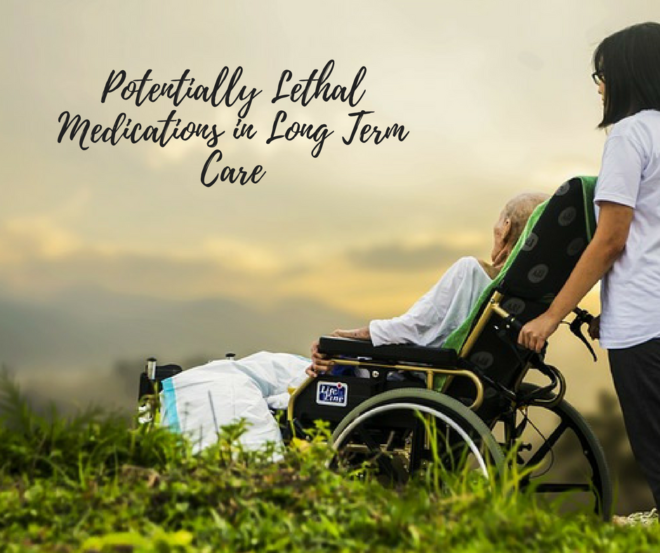I’ve spent a lot of time educated nurses in long term care about the risks of medications. When we talk about lethal medications in long term care, I tend to think about high risk, high reward medications. As a pharmacist I understand that anything is potentially lethal to our residents, it is really a matter of dosing.
There are numerous medications that can increase the likelihood of a serious, potentially lethal effect in our patients. While they are high risk, the benefits can also be incredible. Elderly patients are particularly at risk of adverse effects due to altered metabolism, reduced clearance, and drug interactions. Here’s a list of medications where I’ve seen life threatening consequences due to errors or inappropriate use.
1. Anticoagulants/Coumadin – High risk, high reward medications. Drug interactions, significant bleed risk and how frequently these medications are used make them #1 on my list. As a healthcare professional, here’s a few critical assessments you need to make:
- Ask, monitor, and assess for bleeding, bruising etc. every time you interact with a patient on an anticoagulant
- Take note of new or changing medications to minimize drug interaction risk (overall, the newer anticoagulants are certainly better as far as drug interactions are concerned)
- Errors or omissions in dosing can lead to a life threatening stroke or blood clot. Incorrect administration and numerous drug interactions could lead to a life threatening bleed. For the newer anticoagulants, we aren’t going to routinely monitor INR, but the risk of bleed, stroke, or blood clot remains.
2. Insulin – I’ve seen countless med errors with insulin and with many different forms (long acting, short acting, intermediate acting, U-500, now U-300 etc.) as well as how many patients are on insulin make this number 2 on my list.
- Several times a year I see a short acting insulin given in error when a long acting insulin should be given; very significant, very scary error.
- Sliding scale can make things complicated for patients, caregivers, and even highly qualified healthcare professionals. Do the best we can to keep insulin therapy simple and effective.
3. Dilantin (phenytoin) – This drug has been the culprit of many hospitalizations in my practice. A few pearls:
- Lots of drug interactions.
- Doubling of maintenance dose is almost always a no-no due to the dose dependent pharmacokinetics.
- Drops in albumin (common in the elderly) can lead to toxicity at lower total phenytoin levels.
- I cover phenytoin more in depth on this podcast episode.
4. Opioids – Opioids are frequently used in the elderly for acute pain management, but unfortunately have plenty of concerns as well.
- The risk for respiratory depression is real. Be cautious on transitions of care or when doses may have been changed recently.
- Benzodiazepine use, obesity, underlying respiratory conditions with opioids adds additional risk of respiratory depression.
5. Antipsychotics. These lethal medications in long term care have an FDA boxed warning for increasing the risk of death in elderly patients with dementia. We must have exhausted all options prior to using this type of medication. The indication must be appropriate as well. This is a frequently cited medication class by surveyors due to the high risk nature and sometimes not so great benefit. If you are looking for more pearls and the pharmacology of antipsychotics, you can find that here.
In review of lethal medications in long term care, these are often medications that can have significant benefits, but also have a fine line for toxicity and adverse effects. What did I miss? Which medications have you seen cause potentially lethal adverse effects?
